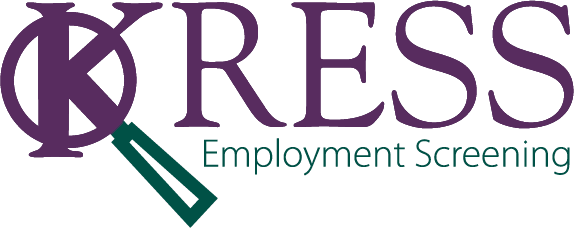When I am assessing a candidate’s outlook and general attitude, I am looking for their perspective, integrity, and honesty. It’s impossible, even for a seasoned interrogator like myself, to tell if someone is being honest right off the bat, but you can use behavioral questions to help gauge the candidate’s honesty. In my industry, it is absolutely critical to hire the most ethical, honest candidates I can find. But the truth is, we all tend to hire the most honest and trustworthy candidate.
“Somebody once said that in looking for people to hire, you look for three qualities: integrity, intelligence, and energy. And if you don’t have the first, the other two will kill you. You think about it; it’s true. If you hire somebody without integrity, you really want them to be dumb and lazy.” – Warren Buffett
So let’s talk about honesty and how you can better judge a candidate. Every person is different and there is no one magical “tell” for honesty or dishonesty. There are many polarizing views on this science. It is flawed. It is always open to interpretation. It is extremely difficult to develop the skills to correctly interpret your perceptions. But if you didn’t have some natural talent at judging character, you wouldn’t even be reading this. I can tell you from experience that the more you understand about human nature, the better chance you have of picking great candidates for you organization. The key is to identify what is known as a baseline for that individual. Interviews don’t always last very long, so I’m going to tell you about the most common and obvious signs to look for. We can break it down into three categories:
- eye direction,
- body language and
- verbal queues.
Eye Direction
We are going to talk about this from your perspective. So the following examples are what you could expect to see when a right-handed person honestly responds to a question, provided you are facing them.
- Eye movement up and to the left indicates: Visually Constructed Images
- Eye movement up and to the right indicates: Visually Remembered Images
- Eye movement to the left indicates: Auditory Constructed
- Eye movement to the right indicates: Auditory Remembered
- Eye movement down and to the left indicates: Feeling, Emotion or Action Performed
- Eye movement down and the right indicates: Internal Dialogue or Talking to Themselves
There are some exceptions to these rules, however.
- Most people who maintain a straight look ahead or eyes that don’t move and seem dead/unfocused are also visually assessing memory.
- Most left-handed people would respond with opposite eye directions.
- When you meet someone for the first time, the first person to look away is submissive to the other.
- People who lie often will maintain an uncomfortably long amount of eye contact. By uncomfortable, I mean they will look you in the eyes for two-thirds or more of the conversation.
- A healthy, honest conversation usually shares the eye contact evenly.
- Finally, a person’s blink rate will increase dramatically during long periods of lying.
So how do you use this information? First, establish a baseline of behavior with specific questions aimed at getting specific results. The best questions to ask are simple ones that you know will produce truthful answers so you can study their eyes. You could ask:
- “What color was the first car?” or “What did your first boss look like?” and they would look up and to the right as they visually remember the image.
- “Imagine you are faced with a problem that cannot be completed by the end of the day. What would you do?” You should see eye movement to the left, either up or straight as they begin to construct the answer.
Once you have established a baseline of predictable responses, you can begin to look for signs of dishonesty. Let’s say you ask, “You have requested we not contact this employer. Did you leave on good terms with them? And as they reply, “Yes I did, I just don’t want it to get out that I’m looking for a new job,” they look to the left. This would indicate a made-up answer as their eyes are showing signs of something constructed, not recalled. Looking to the right would indicate a “remembered” voice or image, and thus he or she would likely be telling the truth.
Body Language
The human body responds to lies in a fairly consistent fashion. The only exceptions are seasoned salespeople ,who are trained in the art of persuasion, and the mentally ill. In general, when a person is lying you will see that his or her expression is limited and stiff, with few arm and hand movements. If they do move their extremities, they will be towards their own body, especially the face.
When someone is sitting in a chair across from your desk and they lie, you will notice they straighten their back, tighten up, or touch their face, throat or mouth. When you lie, there is a subtle swelling in your nose that is slightly itchy, and it can trigger the telltale sign. Some people will experience that itching in their throat, mouth or behind the ear and feel the need to touch or scratch it. Holding their own hands or arms tightly and picking invisible lint or hair from their clothing is also a sign of dishonesty.
On the other hand, if he or she touches the chest or heart with an open hand, has a relaxed posture and hands, leans a bit towards the interviewer while talking, places a hand lightly on their chin, or sits back into a chair in a very relaxed way, these are all signs of honesty. However, watch out for people that go out of their way to overly expose the palms of their hands throughout the interview – these are really great liars.
One of the signs I notice most easily when interviewing is the contradiction between emotional expressions and gestures. When someone is lying, the timing and duration of the emotional gesture and the emotion is just slightly off. The display of emotion is delayed, or stays longer than it would naturally, and then stops suddenly. For example, when someone says, “I love making spreadsheets!” then smiles after making that statement, rather than all at the same time, he or she is most likely lying.
Expressions are limited to mouth movements when someone is faking emotions (like happy, surprised, sad, awe) instead of the whole face. For example, when someone smiles naturally the whole face is involved, but in a fake smile only the muscles from the nose down are utilized while eyes appear open and alert. Hiring mangers see an awful lot of forced or fake smiles, and that is not a real sign of dishonesty. But if you notice a fake smile when the candidate is talking about something they claim to enjoy, do often or look forward to doing, then that is a sign of dishonesty. Also, swallowing and tightening the lips after being asked a question is a sign the candidate wants to hold back information or wasn’t planning to divulge that information unless they were asked. This is a queue for you dig deeper into the answer and watch their behavior as they respond to your questions.
Verbal Queues
Now this part is admittedly difficult in interviews if a candidate is particularly nervous or over-rehearsed, but these are some common verbal queues that someone is lying. For most of these, you only need to reference the U.S. government for public examples.
- In general, a liar will use your words to answer a question. When asked, “Did you eat the last cookie?” The liar answers, “No, I did not eat the last cookie,” instead of simply saying “No.”
- They will not use contractions. A statement with a contraction is more likely to be truthful. For example, “I didn’t do it,” instead of “I did not have sex with that woman.”
- Liars sometimes avoid “lying” by not making direct statements. They imply answers instead of denying something directly. When asked, “Can you create spreadsheets in Excel?” a candidate might answer, “That wasn’t required at my last job,” vs. “No, I can’t.”
- The liar also tends to embellish with unnecessary details to convince you because they are not comfortable with silence or pauses in the conversation.
- A liar may leave out pronouns and speak in a monotonous tone. When a truthful statement is made the pronoun is emphasized as much or more than the rest of the words in a statement. For example, “That’s not the kind of thing that anyone with integrity would do,” vs. “No, I didn’t steal his customer.” Using the “I” shows the speaker is focused inward and not afraid to confront the question, whereas the first sentence is an attempt to distance him or herself from the act itself.
- Words may be garbled and spoken softly, and syntax and grammar may be off. In other words, the sentences will likely be muddled rather than emphasized.
- Watch out for “I think” and “I am trying”. For example, when a person states, “I am trying to be honest,” they are actually telling us they are not being honest. The word “try” indicates an attempt to be truthful.
- People who are honest use exclusive words like “but” and “without” and negations such as “no,” “none,” and “never” much more frequently.
- When a person uses phrases such as “later on” or “afterwards” they have withheld some information by skipping over something in the story. Dig deeper and ask what happened before.
- When a person changes the tense in the middle of a story, they are not drawing the story from memory. For example, “I was told to that it was my responsibility to complete all aspects of the audit, but then she tells me I have overstepped my grounds.” When a person is telling what happened, they usually speak in the past tense. Therefore, if present tense language appears in the statement, it is a sign they are making up at least some part of the story.
It is nearly impossible to give a lengthy deceptive statement without revealing it is a lie. Listen carefully and people will always tell you exactly what you need to know. If you believe someone is lying, try to change subject of a conversation quickly. A liar follows along willingly and becomes more relaxed because they want the subject changed. A truthful person is more likely to look a little confused by the sudden change in topics and may later go back to the previous subject if it was not finished. Learn to dig deeper when a candidate displays troubling behavior while answering questions and use silence to uncover any hidden truths.
Remember this: if you listen carefully, people’s words will always betray them.









